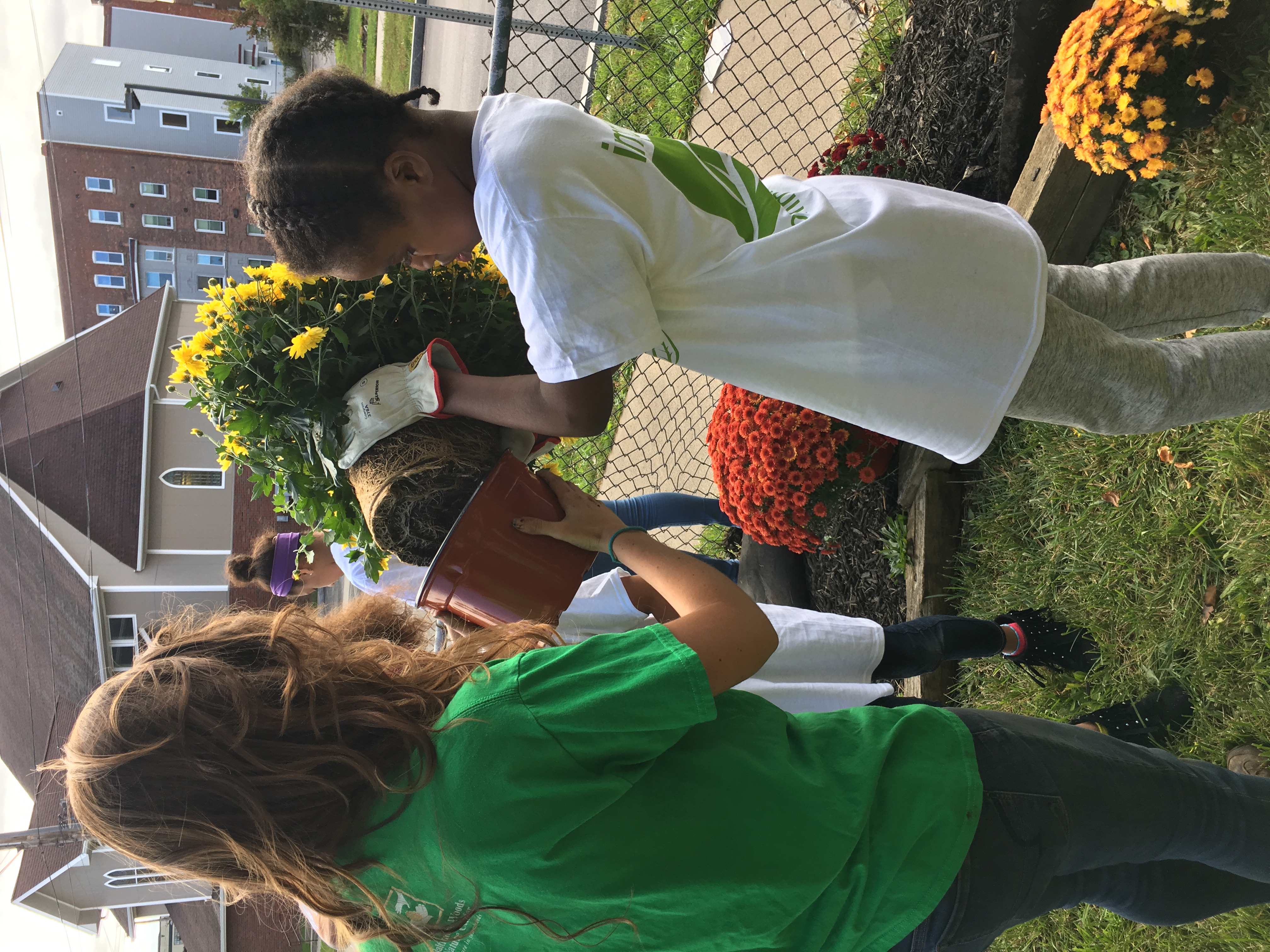 Thirty students from Seymour Dual Language Academy on Shonnard Street spent time at school, but not IN school, yesterday as they rolled up their sleeves, donned work shirts and gloves and spent the morning outside weeding, digging, planting, and mulching their school’s rain garden and flower beds. Carrier, a long-time partner of Seymour Dual Language Academy, was on site with their employee volunteers and tools as part of their Green Apple Day of Service project.
Thirty students from Seymour Dual Language Academy on Shonnard Street spent time at school, but not IN school, yesterday as they rolled up their sleeves, donned work shirts and gloves and spent the morning outside weeding, digging, planting, and mulching their school’s rain garden and flower beds. Carrier, a long-time partner of Seymour Dual Language Academy, was on site with their employee volunteers and tools as part of their Green Apple Day of Service project.
As part of a collaborative project with Carrier and Baltimore Woods Nature Center’s Nature in the City education team, the rain garden project served a multitude of purposes. Students experienced the important role that their school rain garden plays in improving water quality in the local watershed in a hands-on activity and the students were able to contribute to a project that improved their school grounds. Working alongside students, Seymour vice principal Stephen Polera sees this project as a tradition for fifth-grade students to leave a legacy as they grow up and move on in the community.
When asked, students had this to say about the project, “Today, we are organizing the school’s rain
garden and we are making sure it is nice and neat for everybody to see.” Onondaga County Save the
Rain installed the garden at Seymour in 2012.
Nature in the City, an urban science program run by Baltimore Woods Nature Center, made the perfect vehicle for connecting the students’ classroom lessons to the outdoor work project. “The rain garden is a great working example of how green infrastructure helps the watershed which is something these students learned about in their Nature in the City lessons in third grade,” said Baltimore Woods Nature Center Executive Director Whitney Lash-Marshall.
With the support of Carrier and the Syracuse City School District, students in K-sixth grade at Seymour receive three, one-hour lessons at each grade level that reinforces their science curriculum. The added benefit for the kids yesterday came when they discovered a garter snake, a frog, and several insects living in their rain garden and flowerbeds.
“They [The kids] got to really experience that there’s a lot more here than plants and mulch. There’s a little ecosystem happening right in front of them,” said Lash-Marshall.
The weather cooperated, offering all the sun needed to make the students, volunteers, and plants happy. At noon, the students stepped back to survey their work, marveling at their accomplishments; four flowerbeds along the fence in front of the school were filled with colorful fall mums and the rain garden had been transformed, with native plants designed to help with rainwater collection. One student explained the importance of the rain garden as, “We were helping the environment by putting mulch in the rain garden…a rain garden helps the environment in many different ways…it helps the rain go down into the soil instead of into the sewers.”
As part of the Onondaga County Save the Rain #BlockLitter campaign, students finished the morning by canvassing the school grounds for litter so it didn’t find its way into Onondaga Lake or into their beautiful rain garden.

